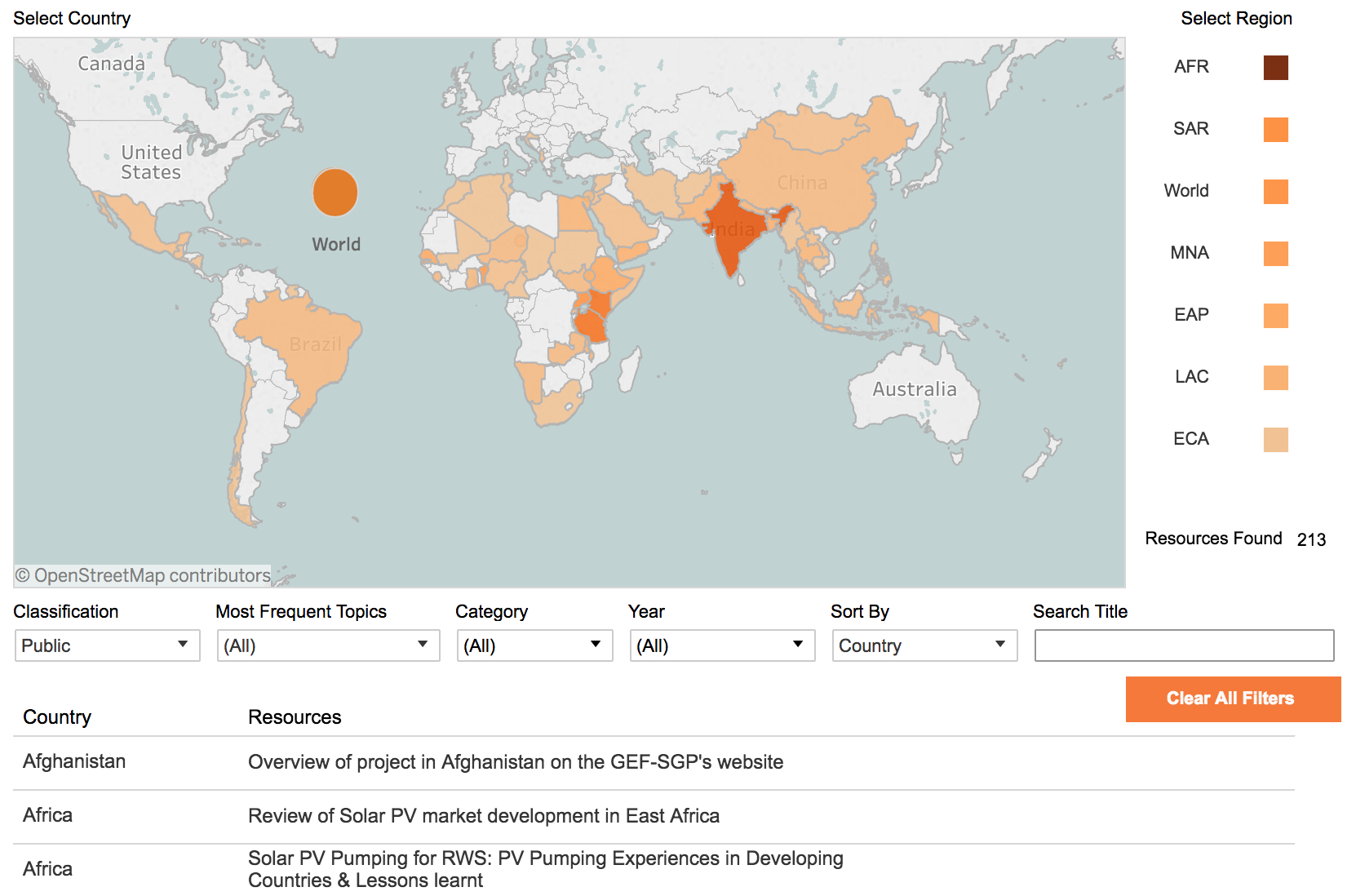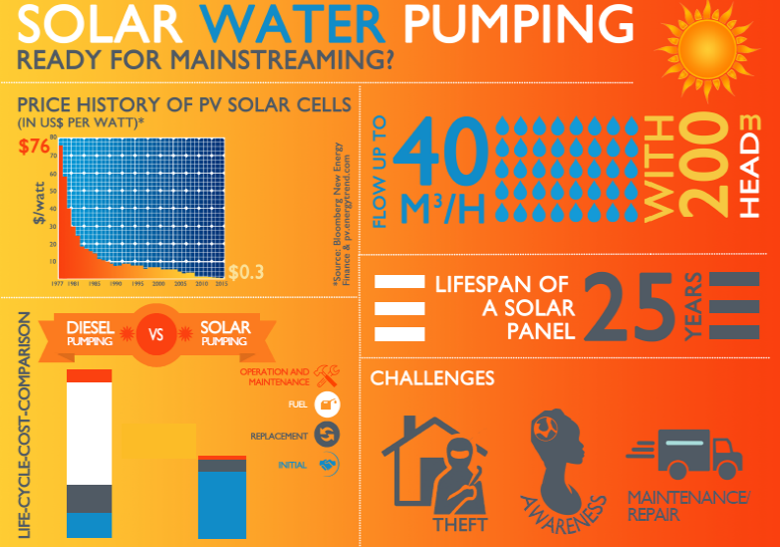News
Millions of people around the world live with limited access to water. In many communities, ground water is extracted through electric water pumps, which use diesel to fuel their systems. However, these systems not only require costly, regular servicing and the purchasing of fuel, they emit carbon dioxide polluting the atmosphere.
Solar Water Pumping, or photovoltaic water pumping (PVP), provides an alternative. After years of research and technological advances, it has proven to be operationally, financially, and environmentally sustainable. In recent years, the cost of solar technology has dropped tremendously. Prices for the solar panels used in these systems have dropped up to 80%. In addition, these panels last around 25 years, requiring little maintenance throughout this time.
These factors have made Solar Water Pumping an extremely viable way to expand energy access across developing countries and communities, while creating a strong resistance to shifts in rainfall caused by climate change or unreliable seasonable patterns. Some governments have opted to subsidize the cost of solar pumping, increasing the pool of shared learning for this emerging technology.
Even though solar water pumping is ready for mainstreaming and has started to take off in some parts of the world, its benefits remain largely unknown to communities, governments, and development institutions.
To address this knowledge gap, the World Bank has developed an accessible and interactive Knowledge Base on Solar Water Pumping. This online repository aims to raise awareness about the technology and provide resources that help incorporate it into operations. Currently, the repository contains more than 260 resources from all regions where the World Bank works, and covers a broad range of issues from technological change to institutional setup.
Go to the Knowledge Base now

Knowledge Highlights
A concise presentation from two World Bank Water and Energy specialists that gives an overview of PVP technology and discusses its potential for mainstreaming, in terms of possible financing models and the challenges faced.
This is the place to start when searching for academic literature on PVP. It covers a broad range of PVP-related issues, namely the current state of the technology, types of motors and pumps, technical performance, economic and environmental benefits, and initiatives in developing countries with a focus on India.
A widely known report and one of the most cited PVP feasibility studies. It makes a thorough life-cycle cost analysis of PVP and diesel pumps in the context of Namibia, with the conclusion that PVP is less costly for any hydraulic volumes up to 3,000 m4/day. Payback periods are presented for different operating requirements. The study also found that there is high market potential for PVP.
Developed by the World Bank, this is the most comprehensive toolkit about the implementation of PV projects for communities in developing countries, including (but not restricted to) PVP. It lays out an approach to project implementation and management, from initial assessment to project preparation, procurement and contract management, and long-term operation and maintenance.
Last Updated: May 30, 2017

Download a high resolution version of the infographic here.
The financial and technical support for this Knowledge Base is provided by the Energy Sector Management Assistance Program (ESMAP), a global knowledge and technical assistance program administered by the World Bank to help low and middle-income countries reduce poverty and boost growth, through environmentally sustainable energy solutions.